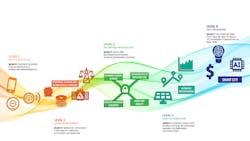I recently read an IEEE Spectrum article titled “The Biggest IT Failures of 2018” and it included a long list of industries that, in one way or shape, had experienced a fairly significant IT-related issue in 2018, impacting hundreds of thousands, if not tens of millions of customers. The article went on to say that technical mishaps “are universally unprejudiced: they happen in every country; to large companies and small; in commercial, nonprofit, and governmental organizations; and without regard to status or reputation.”
To back up this claim, the article provided a list of industries impacted including automakers, telecommunications, airlines and rails, government systems, healthcare, retail, hospitality, financial systems, and even the fast food industry.
To put this in perspective, some specific examples included:
- Millions of vehicles being recalled by several different manufacturers due to major safety issues and concerns — all of which were supposedly software related!
- Communication companies experiencing nationwide outages impacting tens of millions of customers, including an expired software certificate that took down telecom networks in 11 countries at the same time!
- Data breach or ransomware attacks on most industries, including airlines, healthcare systems, hotel systems, maritime systems, and even Google and Facebook. Most notably, Facebook acknowledged that 87 million users had their personal data improperly accessed by a data mining company, as well as a “security issue” that exposed 50 million accounts to cybercriminals.
- Known IT problems and botched integration projects at several global stock exchanges that impacted millions of dollars of investments and retirement accounts.
- Government payroll systems, and even the Internal Revenue Service (IRS), which experienced failures and outages, impacting the lives of millions of people across the globe. Interestingly enough, in one case where Australia’s taxing authority experienced multiple tax system outages, businesses were told to quit whining since outages were “a fact of modern life.”
- Mass rail transportation systems from South West England to Hong Kong to Sydney which experienced major IT problems that caused chaos for tens of thousands of passengers. And, in at least one case, confused signal operations that caused the derailing of trains.
- Numerous retailers, including Amazon and KFC, that suffered IT glitches, resulting in not being able to meet inventory and customer demands as expected.
A common theme among all of these was that most issues could have been partially, if not entirely, preventable if the enterprise had followed some basic IT integration and security practices. Unfortunately, most of the impacted organizations had little understanding of their own IT systems or the security threats to their organizations.
Lack of good integration practices aside, these failures are a stark reminder that while IT and operational systems continue to get smarter, our dependence on them is also becoming more critical — and the impact of potential failures more significant, more expensive and more extensive to our day-to-day lives.
Interestingly enough however, as I read the article one thing became very apparent — there were no utility industry examples cited among the list! Of course, this does not mean that the utility industry was squeaky clean in 2018. In fact, recently there were a few notable challenges that I’m certain most have heard of by now, including the wildfire events in California which have had an unfavorable and significant long-term impact to the major utility in the region; or the gas pipeline system operating and monitoring issues that led to system over-pressurization and consequently a series of very unfortunate deadly explosions in the northeast. These two very unfortunate events aside — certainly not wanting to make light of the impact to thousands of people — overwhelmingly, the utility industry has been immune from major recurring failures.
Moreover, I would argue that the utility industry, as a whole, is still one of the most robust and reliable “service” industries around. Over the course of history, our utility industry has been designed and built from the ground up to be very resilient; and over time, has set reliability expectations that few other customer service enterprises can match. We walk into a dark room, flip the light switch and never think twice about the fact that there is significant and major infrastructure (both physical and IT) behind the scenes enabling us to experience the service instantly. Unfortunately, this high level of reliability is also a double-edged sword which has made the average consumer immune to the concept of not having electricity (or water or gas for that matter) delivered immediately, where and when it is needed. It’s only during major catastrophes and storms that we really start to think about the long-term consequences of having to do without these commodities.
And yet, one can also argue that our electric, gas, and water transmission and distribution systems are some of the oldest critical infrastructure systems in the world — after all, how many other systems can you name that still have many components with an average age of 40+ years in operation? In fact, if Thomas Edison or Nicholas Telsa were alive today, I would argue that they would still recognize our electric distribution network. And while we may not have always gotten it right with respect to what our future was going to look like, we have been able to manage, with some reasonable degree of confidence, what to anticipate and where to enhance the systems in order to manage the ever-increasing demands expected of this industry. However, as our dependence continues to grow and become more mission critical on the utility organizations, our challenges have equally increased. In broad categories, they include more complex operating structures and models, aging workforce and infrastructure, additional regulatory demands including pressures to reduce the carbon footprint and significantly increase the penetration of distributed energy resources (DERs), additional system visibility across the entire supply/demand chain, and enhanced intelligence and analytics to improve the daily operations of the system.
Fear Not, the Future is Bright!
To address some of these challenges, utilities have been investing heavily over the last couple of decades to modernize their service grid and infrastructure. The concept of a smarter grid has been around for some time now and continued efforts by most utilities to modernize the grid is ongoing. As the level of technology maturity increases, the industry has undergone a transformation from a system that simply provided sensing and very localized control, to one that is increasingly becoming digitized, leveraging real-time visibility and intelligence and performing the level of real-time analytics that can ultimately allow for a true self-healing grid. Furthermore, today’s consumers will become prosumers, interacting and performing transactions directly among one another. Dynamic balancing of load, storage and other distributed generation will become the norm, and the industry will experience a transition from kWh sales-based business model to a transactional model.
But in order for the utilities to continue to stay competitive, and at the same time provide the same or enhanced levels of reliability, cultural and operational changes will be required to allow utilities to deal with the complexities associated with additional demands of system planning and coordination of high penetration DERs.
So How Do We Get There?
Historically speaking, utility planning and investments have followed a pattern of simple data collection all the way to emerging technologies allowing for a self-optimizing grid. The figure below provides a simple view of this current and future expected progression:
As the grid continues to evolve and our industry continues to transform — with more focus being placed on a digitally enabled grid — it is imperative to stay abreast of this digital transformation. Some industry analysts are claiming that digitally enabled grid-related initiatives and investment will reach hundreds of billions of dollars by 2025. That is a significant sum and requires some tangible and strategic planning in order to achieve the anticipated benefits.
Deliberate investments toward enterprise optimization and aggregation will be central to the digitization of the utility industry. Enabled by newly connected devices at the distribution level and the edge of the grid, combined with advanced distribution intelligence and control capability, and with real-time load balancing and network controls, the utility industry can start to dispatch the most economic, reliable and sustainable sources to meet demand, all the while delivering higher efficiency.
System operators leveraging digitally and spatially enabled grid analytics can gain insights on supply and demand to better optimize their transmission and distribution grid, and in turn use demand information gained through digital technologies to alleviate transmission congestion by dispatching distributed resources. Along with better insight for system operators, a digital grid can create a dynamic customer interface, where utilities can maintain their competitive edge by offering real value to customers through add-on services.
But while significant strides have been made as a whole toward this, our utility industry has traditionally been very cautious and slow to move. For example, typically, GIS systems have strived to support the network data and maintain that data for real-time operations; but in many instances, the planning and operations work are conducted in silos and disconnected, losing many of the immediate benefits that can be gained. System operations use GIS to plan and update the nominal state of the network. This data is often needed and relied upon in most real-time systems such as outage management systems (OMS), advanced distribution management systems (ADMS), and distributed energy resource management systems (DERMS). And yet, true integration among such systems don’t fully exist and are disjointed at best. Nothing is more prevalent than the recent, and most unfortunately, catastrophic system and/or operational failure that was noted earlier. And while the actual causes of these issues are still being debated, it can be argued that improved geospatial and operational visibility across the organization via real-time systems could have helped prevent some of it.
Better spatial asset and operational data, along with more accurate real-time network analytics will greatly enhance the operational decision-making process. To accomplish this, better systems of engagement are needed, enabling benefits that can only be gained via interrelated technologies, each supporting and adding incremental value. Evaluating and prioritizing the needed investments requires an overall enterprise strategy and roadmap. But it’s important to realize, that a roadmap is not simply a list of projects, but is rather about establishing bite size pieces — with prioritized considerations for the business, systems and required data — and a way to get to the end state without overwhelming the organization; otherwise, the end results will only be more stranded investments without the promised benefits!
In conclusion, I think Lewis Carroll summed it up best in his famous Alice’s Adventures in Wonderland novel:
“Would you tell me, please, which way I ought to go from here?” asked Alice.
“That depends a good deal on where you want to get to,” said the Cat.
“I don't much care where,” said Alice.
“Then it doesn't matter which way you go,” said the Cat.
About the Author
Mehrdod Mohseni
Vice President, Grid Solutions
Mehrdod Mohseni is a seasoned executive, registered Professional Engineer and a Senior IEEE member with over 25 years of experience in consulting and systems integration in the Energy and Telecommunication industries. He heads up SSP’s Grid Solutions Consulting practice with a focus on systems and operational efficiency applications, where he has assisted numerous past clients with their vision, architecture, selection and execution of advanced technology solutions. His diverse background has enabled him to develop strong expertise in both selection and implementation of complex information technology and automation solutions as they apply to the various aspects of the power utility and energy businesses.

